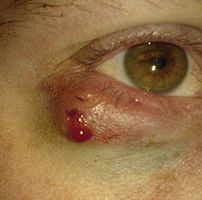[amazon_link asins=’1546332235,B01349U97M,B07178GG2N,B01CM9Q4L0,1497411564,B00FS3W6U6,B00C2QROVS,B0779NY6JB,B073BVGXNK’ template=’ProductCarousel’ store=’finmeacur-20′ marketplace=’US’ link_id=’307ef738-e21f-11e7-82c7-d750f4e54ead’]
Benjamin Franklin once wrote that nothing in this world is certain but death and taxes. But surely fatigue should be added to that list. After all, who has not felt dog-tired, sometimes for long stretches, at one time or another?
Researchers say fatigue is one of the most common symptoms experienced by adults in the general population, whether you live in the United States or elsewhere. As one fatigue researcher notes, “Feeling tired is so common as to be considered normal.” Not surprisingly, fatigue is also one of the most frequent complaints in doctors’ offices around the globe.
Often fatigue is to be expected: You’re recovering from the flu, or, like too many Americans, you haven’t been getting enough sleep lately. Maybe, like so many people, you’re simply trying to do too much, and the resulting stress — a major contributor to fatigue — is wearing you down. In these cases, regaining your energy may be as straightforward as getting some much-needed rest and taking time to relax — which your body and mind need to function at full capacity.
CLICK & SEE THE PICTURES
You can fight fatigue with regular physical activity.
If you’re a baby boomer, your fatigue may be due to some of the physical changes that accompany aging, such as normal reductions in the amount of deep sleep or a decline in muscle mass. If you’re a menopausal woman, frequent hot flashes, which can disrupt the amount and quality of sleep, may also be contributing to your fatigue. While no one can turn back the clock, there are steps you can take to slow or even reverse some aspects of age-related fatigue.
But in some cases, fatigue is a sign that something is amiss, and should be brought to the attention of your doctor. For example, fatigue is one of the main symptoms of a number of conditions, including depression, congestive heart failure, anemia, hypothyroidism, and diabetes, all of which require medical attention. Often fatigue subsides when these conditions are treated. Whatever its cause, fatigue is telling you something important — that you need to rest and relax, perhaps, or that you should take better care of yourself, or (fortunately, less often) that you have a disease or condition that needs treatment. Fatigue, like death and taxes, may indeed be an inescapable part of life. But that doesn’t mean you have to take it lying down. This Special Health Report provides you with the latest information about fatigue and offers strategies to help you regain the physical and mental energy you need to enjoy life to its fullest.
Energy and fatigue
The word “energy” can mean many things. You might use it to describe the strength you need to take on a physical challenge and the endurance to keep it up for an extended period: running a marathon, biking uphill, sightseeing all day, weeding and planting in the garden, and so on.
But energy is not just about muscles. It’s also about the mind. When you’re mentally energetic, you’re alert, you’re “on,” you readily absorb information by reading and listening. Another aspect of mental energy is motivation — the drive to do things like read a book cover-to-cover in one sitting, initiate a new work project, or cram for an exam. You may have noticed that when you’re really absorbed in an activity, you feel more energetic than when you are only half-interested in it. Motivation can be a powerful force in overcoming fatigue.
When you lack energy, you feel physically weak, mentally dull, or both. Effort of any sort can tire you out quickly. This absence of energy is often referred to as fatigue, and it’s a common phenomenon that has been viewed differently over the years (see “Changing views of fatigue,” below). Fatigue has physical, mental, and emotional components. Your muscles might ache. You might have trouble concentrating or need to read a passage over three times before you understand it. You might also feel unmotivated or bored.
Is it simply that you need more sleep? Sometimes when you lack energy you also feel sleepy. Sleepiness is specifically the urge to go to sleep. Most people need roughly eight hours of sleep a night. Some people can get by with less; some need more. Sleepiness can also be induced by medications that have a sedative effect on the brain (see “Medications”).
But lack of energy is not just sleepiness: It’s physical (weariness or weakness), emotional (lack of motivation or boredom), and mental (lack of concentration and sharpness). You can lack energy or feel fatigued without being sleepy, and you can also be full of energy and sleepy. Most people have had times when they’ve been able to override the urge to sleep with a surge of physical, mental, or emotional energy. But sleep and energy are related. No matter how energetic you are, you can’t override sleepiness indefinitely. Eventually, lack of sleep will sap your energy and lead to fatigue .
You probably know that getting enough sleep is important to your health and well-being. But the quality of the sleep you get also has a big effect on how you feel during the day.
If sleep time isn’t a good time for you, talk to your doctor or healthcare professional about your options.
You may click to see:–Fatigue & Low Energy
Exhaust All The Time
Sources:http://www.healthline.com/sw/hr-sr-boosting-your-energy












































